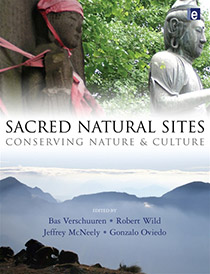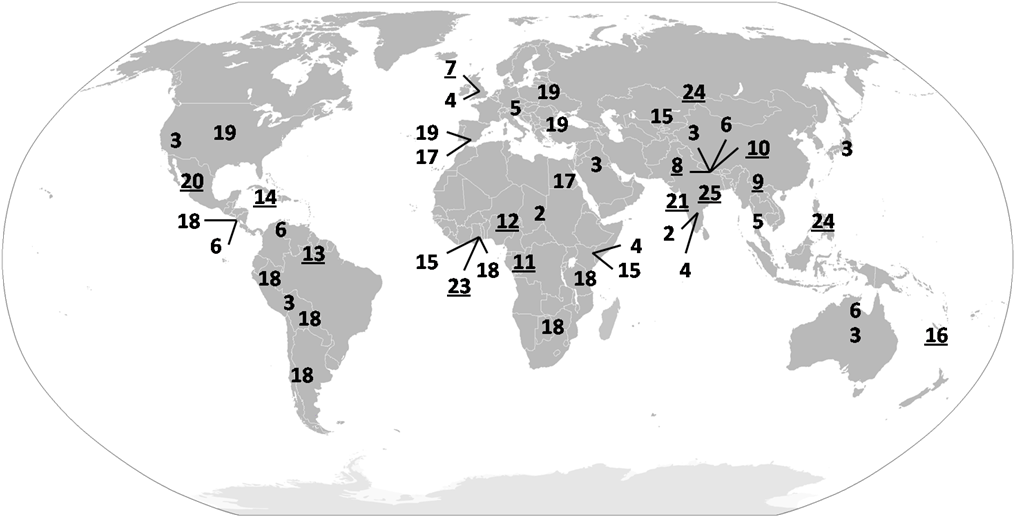What is the book about?
Sacred Natural Sites are the world's oldest protected places. This book focuses on a wide spread of both iconic and lesser known examples such as sacred groves of the Western Ghats (India), Sagarmatha /Chomolongma (Mt Everest, Nepál, Tibet - and China), the Golden Mountains of Altai (Oroszország), Holy Island of Lindisfarne (Egyesült Királyság) and the sacred lakes of the Niger Delta (Nigéria).The book illustrates that sacred natural sites, although often under threat, exist within and outside formally recognised protected areas, heritage sites. Sacred natural sites may well be some of the last strongholds for building resilient networks of connected landscapes. They also form important nodes for maintaining a dynamic socio-cultural fabric in the face of global change. The diverse authors bridge the gap between approaches to the conservation of cultural and biological diversity by taking into account cultural and spiritual values together with the socio-economic interests of the custodian communities and other relevant stakeholders.
Lessons Learned
Many lessons have been learned from the book and the processes that have contributed to its compilation. These lessons have resulted into the developement of the Action Plan for the Conservation of Sacred Natural Sites which guides the actions of the Sacred Natural Sites Initative. The following 10 lessons learned on sacred natural sites are explained further in the books' concluding chapter:- Sacred natural sites have long served as a primary network of ecosystems for conserving nature and culture.
- The rapid degradation and loss of sacred natural sites severely threatens critical biodiversity, ecosystem services, cultural resources and even ways of life.
- Recognizing sacred natural sites supports community autonomy, promotes effective management and gives voice, rights and action to local people.
- Faith, spirituality and science provide different but complementary ways of knowing and understanding human-nature relationships.
- Mainstream, folk and indigenous religions and spiritualties have complex, sometimes conflicting relationships; enhanced mutual respect and in some cases rapprochement is required for collective care of sacred natural sites.
- Successful co-existence of sacred natural sites and modern economic imperatives requires a better understanding of their interrelationships, and of the broad values and benefits of sacred natural sites for human wellbeing and development.
- Sacred natural sites as nodes of resilience, restoration and adaptation to climate change offer opportunities for recovering ecologically sound, local ways of life.
- Sacred natural sites need to be consciously included as part of a coherent and coordinated response to global change.
- Local commitment, wide public awareness, supportive national policies and laws, state protection and broad international support are essential for the survival of sacred natural sites.
- A broad strategy for conserving sacred natural sites, defining the priority actions required and building a global coalition to carry out these actions is urgently needed.
Map of locations
World map linking the approximate location of sacred natural sites to the chapters in the book: (Forrás: Bas Verschuuren in Verschuuren et al 2010)
How to get the book
The Sacred Natural Sites book can be ordered directly through the Routledge Website. Hardback, paperback and eBook options are available.Purchase book »
To request a PDF copy from the editors for non-commercial purposes please email info@sacrednaturalsites.org
Request PDF copy »
Endorsements
Julia Marton-Lefèvre
Director General, International Union for Conservation of Nature, Gland, SvájcThis book is being published in the International Year of Biodiversity, which gives it special importance as an expression of the special relationship between people and the rest of nature. It offers us an opportunity to remind ourselves of the deep and meaningful relationships that many religions and faith communities have with nature, demonstrated by their devotion to sacred natural sites such as those described in these pages.
Professor Alastair McIntosh
Centre for Human Ecology, University of Strathclyde, UK and author of Soil and SoulIf science is to serve life on this planet, we need more than just intellectual rigour, we also need ethical vigour. That demands values. But what might inform these? One basis is that which human experience has termed “the sacred”. For some, “the sacred” is a hypothetical concept. For others, it is a function of empirical experience in consciousness. Either way, this milestone of a book shows that the impact on nature conservation can be hugely positive, inviting scholarly critique and appreciation.
Fikret Berkes
Distinguished Professor and Canada Research Chair at the University of Manitoba, and the author of Sacred EcologySacred Natural Sites sports an international all-star cast and concise, no-nonsense chapters. The study of sacred natural areas has come of age, and this is the book to prove it.
Have you read the book? E-mail: info@sacrednaturalsites.org and tell us about your findings!





